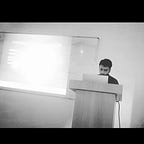Quantum Machine Learning: Unleashing the Power of Quantum Computing for Optimization
Machine learning has revolutionized numerous industries, powering advancements in fields such as healthcare, finance, and autonomous vehicles. However, as datasets grow larger and models become more complex, the need for efficient optimization techniques becomes paramount. In recent years, the emergence of quantum machine learning has offered a promising avenue for tackling optimization challenges that surpass the capabilities of classical computing. This article explores the fusion of quantum computing and machine learning, delving into the technical elements that underpin quantum optimization algorithms.
The Quantum Advantage: Quantum machine learning combines the principles of quantum computing and classical machine learning algorithms to enhance optimization processes. Quantum computers leverage quantum bits or qubits, which exist in superposition and can represent multiple states simultaneously. This characteristic allows quantum computers to explore an exponentially larger solution space compared to classical computers, potentially leading to faster optimization and improved performance.
Quantum Optimization Algorithms:
- Quantum Annealing: Quantum annealing is a popular optimization technique that leverages quantum fluctuations to search for the lowest energy state of a given objective function. It relies on the quantum phenomenon of tunneling to explore various solution landscapes. The D-Wave Systems quantum annealer is a prominent example of this approach.
- Variational Quantum Algorithms: Variational quantum algorithms, such as the Quantum Approximate Optimization Algorithm (QAOA) and Variational Quantum Eigensolver (VQE), utilize parameterized quantum circuits to optimize objective functions. These algorithms iteratively update the circuit parameters to minimize a cost function, providing an approximate solution to the optimization problem.
Quantum Classification with QSVM: Quantum Support Vector Machines (QSVM) is an application of quantum machine learning for classification tasks. QSVM takes advantage of quantum computing principles to enhance classification performance, particularly in high-dimensional feature spaces. It leverages the quantum kernel trick to efficiently perform classification on quantum data.
Technical Elements for Optimization and Classification:
- Quantum Gates and Circuits: Quantum gates, the basic building blocks of quantum circuits, perform operations on qubits. Gates like the Hadamard gate, Pauli gates, and CNOT gate enable transformations that manipulate the quantum state. Quantum circuits are composed of sequences of these gates, allowing for complex computations.
- Quantum Entanglement: Quantum entanglement is a phenomenon where the quantum states of multiple qubits become correlated and interdependent, even when separated by large distances. It enables quantum computers to perform parallel computations and can enhance optimization and classification by exploring a larger solution or feature space simultaneously.
- Quantum Measurements: Quantum measurements are used to extract classical information from the quantum state. These measurements provide the final result of quantum computation, yielding the optimized solution or classification outcome.
Here’s an example of a variational quantum algorithm implemented using the Qiskit library in Python. The code demonstrates a simple optimization problem of finding the minimum value of a quadratic function.
import numpy as np
from qiskit import Aer, QuantumCircuit, transpile, assemble
from qiskit.visualization import plot_histogram
# Define the objective function
def objective_function(x):
return x ** 2 - 4 * x + 4
# Define the quantum circuit
def quantum_circuit(params):
qc = QuantumCircuit(1, 1)
qc.ry(params[0], 0)
qc.measure(0, 0)
return qc
# Initialize variables
learning_rate = 0.1
epochs = 100
theta = np.random.rand(1) * 2 * np.pi
# Run the optimization loop
for epoch in range(epochs):
# Evaluate the objective function
value = objective_function(theta[0])
# Print the current value
print(f"Epoch: {epoch + 1} | Value: {value}")
# Create the quantum circuit
circuit = quantum_circuit(theta)
# Simulate the circuit
backend = Aer.get_backend('qasm_simulator')
job = backend.run(assemble(transpile(circuit, backend=backend), shots=1024))
result = job.result()
counts = result.get_counts()
# Calculate the gradient
gradient = (counts.get('0', 0) - counts.get('1', 0)) / 1024
# Update the parameters
theta -= learning_rate * gradient
# Visualize the output
plot_histogram(counts)The output displays the objective function value at each epoch, showing how it converges to the minimum value. Additionally, the histogram visualization shows the measurement outcomes of the quantum circuit, indicating the probability distribution of the qubit state. In this example, the histogram should show a high probability for the measurement outcome ‘0’, indicating that the algorithm found the optimal value close to zero.
Challenges and Future Prospects: Quantum machine learning and quantum optimization are still in their early stages, and several challenges need to be addressed. These include improving qubit coherence and minimizing errors introduced during computation. Additionally, scaling up the number of qubits and developing error correction techniques are crucial for tackling more complex optimization problems.
Nevertheless, the potential applications of quantum machine learning are vast. From portfolio optimization in finance to drug discovery in healthcare, quantum optimization algorithms offer the promise of revolutionizing various industries by efficiently solving complex optimization problems.
Quantum machine learning provides a groundbreaking approach to optimization, leveraging the power of quantum computing to explore vast solution spaces in an efficient and parallel manner. Quantum annealing and variational quantum algorithms are among the key optimization techniques employed in this field. While challenges remain, ongoing research and technological advancements offer a glimpse into a future where quantum machine learning becomes an integral part of optimizing real-world problems, unlocking unprecedented possibilities for scientific and technological advancements.
